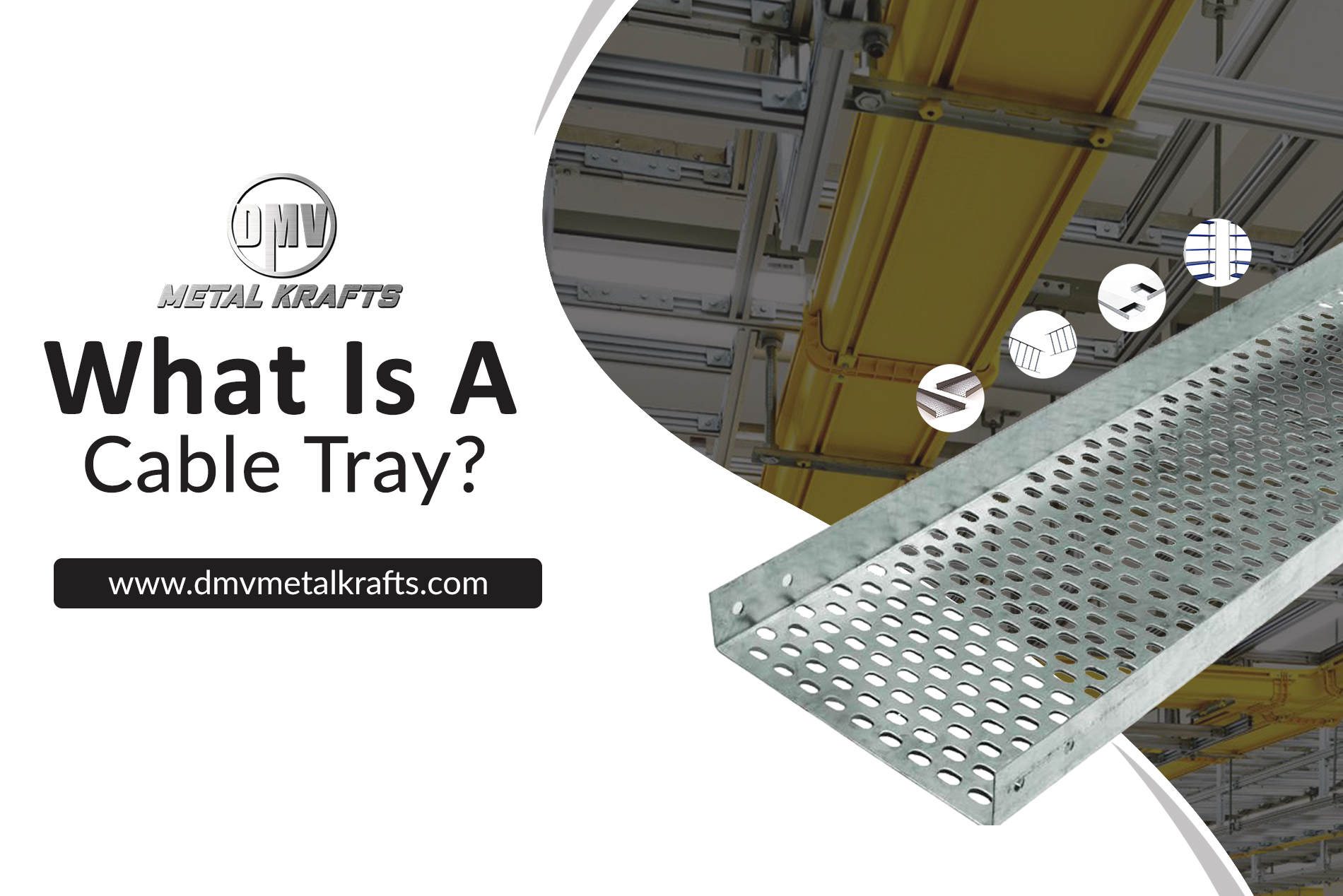
Introduction:
Cable tray types are essential components in electrical installations and cable tray types, providing support and protection for cables. Understanding the different types of cable trays is crucial for ensuring efficient and safe cable management systems. In this article, we’ll delve into various cable tray types, discussing their features, applications, and advantages.
Cable Tray Types Explained
Ladder Cable Trays
Ladders are characterized by their rungs, which resemble a ladder, providing ample support for cables. These trays offer excellent ventilation and are ideal for heavy-duty applications.
Ladder cable trays are commonly used in industrial settings, such as manufacturing plants and power stations. Their robust design makes them suitable for supporting large bundles of cables while allowing for easy access during installation and maintenance.
Perforated Cable Trays
Perforated feature evenly spaced perforations along their length, facilitating airflow and heat dissipation. These trays are versatile and suitable for various environments, including commercial buildings, data centers, and telecommunications facilities.
Perforated are preferred for applications where cable visibility and accessibility are essential. They allow for efficient cable routing and organization, reducing the risk of cable damage and improving system reliability.
Wire Mesh Cable Trays
Wire mesh cable trays consist of interconnected wires, forming a mesh-like structure. These trays offer excellent strength and durability while providing optimal cable support and ventilation.
Wire mesh is commonly used in indoor and outdoor installations, including office buildings, warehouses, and outdoor utility projects. Their open design allows for easy cable installation and maintenance, making them a preferred choice for various applications.
Channel Cable Trays
The channel features a solid bottom with raised edges, providing secure containment for cables. These trays offer enhanced protection against environmental factors such as moisture and dust.
Channels are commonly used in harsh environments where cable protection is paramount, such as chemical plants, wastewater treatment facilities, and outdoor installations. Their robust construction ensures long-term reliability and performance in challenging conditions.
Solid Bottom Cable Trays
The solid bottom features a solid base without perforations, offering maximum protection for cables. These trays are suitable for applications where cable security and protection are critical.
Solid bottom cable trays are commonly used in areas with high foot traffic or exposure to mechanical damage, such as commercial buildings, transportation hubs, and public venues. Their enclosed design safeguards cables from external hazards, ensuring the uninterrupted operation of electrical systems.
Composite Cable Trays
Composite combines the features of different materials, such as fiberglass and steel, to offer enhanced performance and durability. These trays are highly customizable and suitable for various applications.
Composite is ideal for corrosive environments, outdoor installations, and projects requiring lightweight yet robust cable management solutions. Their versatility and resilience make them a preferred choice for demanding applications across industries.
Basket Cable Trays
The basket features a basket-like design, providing secure containment for cables while allowing for adequate ventilation. These trays are lightweight, easy to install, and suitable for a wide range of applications.
Baskets are commonly used in commercial buildings, data centers, and telecommunications facilities where cable routing and organization are essential. Their open design facilitates airflow, reducing the risk of overheating and prolonging cable lifespan.
Making Informed Decisions
When it comes to cable management, making informed decisions is crucial for ensuring the efficiency and safety of electrical systems. With various cable tray types available, understanding their features and applications can help you select the most suitable option for your project.

Factors to Consider
Environmental Conditions
Consider the environmental conditions in which they will be installed. For outdoor installations or harsh environments, choose cable tray types that offer resistance to factors such as moisture, UV exposure, and corrosion.
Cable Capacity
Evaluate the cable capacity requirements of your project. Different cable tray types have varying load capacities, so ensure the chosen tray can accommodate the expected number and size of cables.
Installation Requirements
Take into account the installation requirements of the cable tray. Consider factors such as mounting options, space availability, and compatibility with other components of the electrical system.
Budget
While cost should not be the sole determining factor, it’s essential to consider your budget when selecting a type. Balance cost considerations with the performance and durability requirements of your project.
Consultation and Collaboration
For complex projects or unfamiliar environments, don’t hesitate to consult with experts in cable management and electrical engineering. Collaborating with professionals can provide valuable insights and ensure that your cable tray selection meets industry standards and regulatory requirements.
Regular Maintenance and Inspection
Once the system is installed, regular maintenance and inspection are essential for optimal performance and longevity. Schedule periodic inspections to check for signs of damage, corrosion, or other issues that may affect the integrity of the system.
Continuous Improvement
As technology advances and industry standards evolve, keep abreast of developments in cable management systems. Incorporate innovations and best practices into your projects to continuously improve efficiency, safety, and reliability.
Smart Cable Tray Systems
Integration of sensor technology and data analytics into systems allows for real-time monitoring of cable conditions, enabling predictive maintenance and optimizing performance.
Environmentally Sustainable Solutions
With a growing focus on sustainability, expect to see the development of eco-friendly materials and designs that minimize environmental impact and promote energy efficiency.
Enhanced Durability and Reliability
Advancements in materials science and engineering will lead to cable tray systems that offer superior durability, corrosion resistance, and longevity, reducing the need for frequent maintenance and replacement.
Integration with IoT and Automation
Integration of systems with Internet of Things (IoT) platforms and automation technologies enables seamless communication and control, streamlining operations and enhancing efficiency.
Customization and Modular Design
Demand for customized solutions tailored to specific project requirements will drive the development of modular designs and flexible configurations that offer scalability and versatility.
Safety and Compliance
Continued emphasis on safety standards and regulatory compliance will drive innovation in designs, ensuring adherence to industry guidelines and minimizing risks in electrical installations.
Embracing Innovation
As the cable management industry evolves, embracing innovation and staying abreast of emerging trends will be key to staying competitive and meeting the evolving needs of customers. By adopting cutting-edge technologies and best practices, you can position yourself as a leader in the field and deliver superior solutions that drive success for your projects.
Advanced Material Science
The exploration of new materials and composites promises to revolutionize construction. From lightweight yet durable polymers to advanced alloys with enhanced conductivity, the possibilities are limitless.
Energy-Efficient Designs
With a growing emphasis on sustainability, expect to see the emergence of energy-efficient cable tray designs that minimize power loss and maximize operational efficiency, contributing to a greener future.
Augmented Reality Applications
The integration of augmented reality (AR) technology into installation and maintenance processes offers unprecedented levels of precision and efficiency, empowering technicians with real-time insights and guidance.
Machine Learning and AI
Harnessing the power of machine learning and artificial intelligence (AI), systems will become smarter and more adaptive, predicting maintenance needs, optimizing cable routing, and enhancing overall performance.
Internet of Things (IoT) Integration
Seamless integration with IoT ecosystems will enable systems to communicate with other smart devices and platforms, unlocking new levels of automation, connectivity, and data-driven decision-making.
Cybersecurity Measures
As connectivity increases, so does the need for robust cybersecurity measures to protect systems from cyber threats and unauthorized access, ensuring the integrity and reliability of critical infrastructure.
Embracing the Future
In the face of rapid technological advancement and shifting industry dynamics, embracing the future is essential for staying ahead of the curve. By embracing innovation, investing in research and development, and fostering collaboration across disciplines, the cable management industry can continue to thrive and evolve.

FAQs (Frequently Asked Questions)
Q: Are cable tray types interchangeable?
A: While cable tray types serve different purposes, some flexibility exists based on specific project requirements. It’s essential to consult with a professional to determine the most suitable type for your needs.
Q: How do I choose the right cable tray type for my project?
A: Consider factors such as environmental conditions, cable capacity, installation requirements, and budget when selecting a type. Consulting with experts can help ensure you make an informed decision.
Q: Can cable tray types be customized?
A: Yes, many manufacturers offer customization options to meet specific project requirements. Customization may include size adjustments, material selection, and additional features tailored to your needs.
Q: Are there regulations governing the use of cable tray types?
A: Yes, various industry standards and regulations govern the design, installation, and use of. It’s essential to adhere to these standards to ensure compliance and safety in electrical installations.
Q: What are the advantages of using cable trays over conduit systems?
A: offers several advantages over conduit systems, including easier cable installation, improved ventilation, scalability, and cost-effectiveness. They provide flexibility and accessibility, making them a preferred choice for many applications.
Q: Can cable tray types be used in outdoor installations?
A: Yes, certain types, such as wire mesh and composite trays, are suitable for outdoor use. These trays are designed to withstand environmental factors such as moisture, UV exposure, and temperature fluctuations.
Conclusion
Understanding the different cable tray types is essential for designing efficient and reliable cable management systems. Whether you’re working on a commercial building, industrial facility, or infrastructure project, choosing the right type is crucial for ensuring optimal performance and safety. By considering factors such as environmental conditions, cable capacity, and installation requirements, you can select the most suitable type for your needs. Consult with experts and adhere to industry standards to ensure compliance and safety in your electrical installations.

